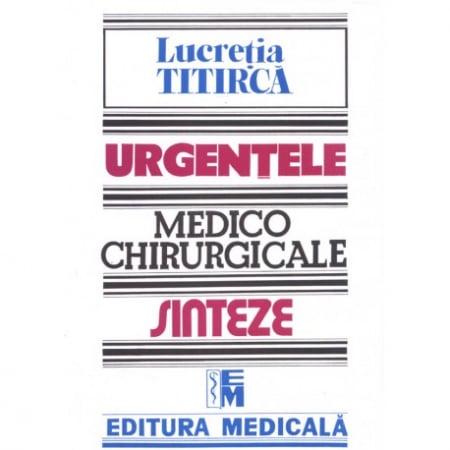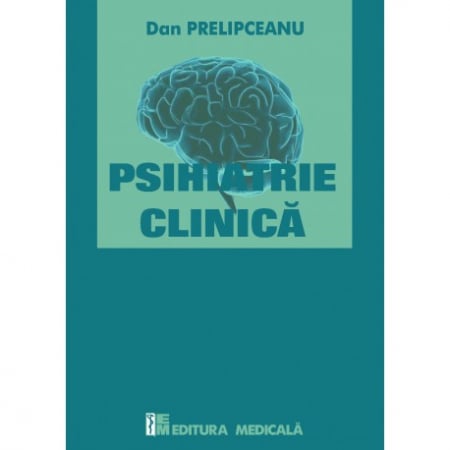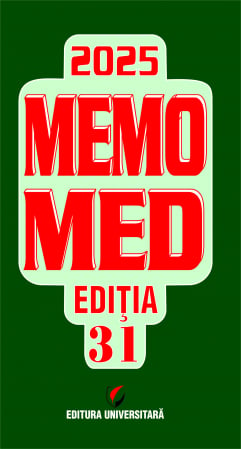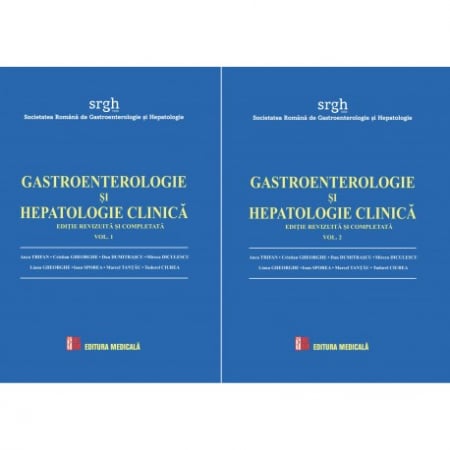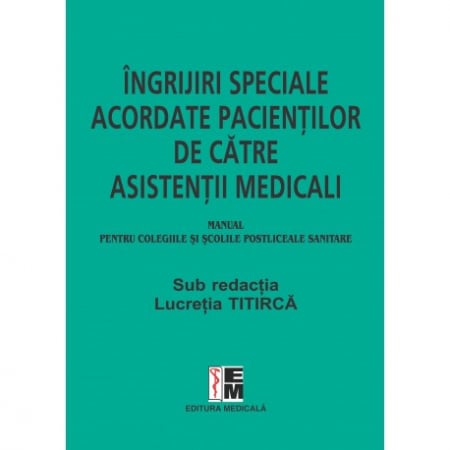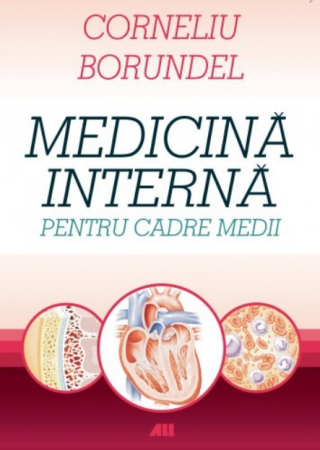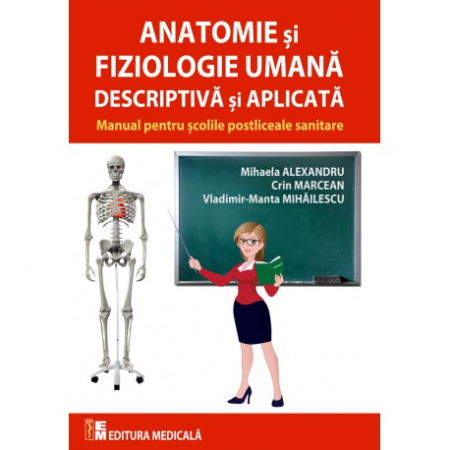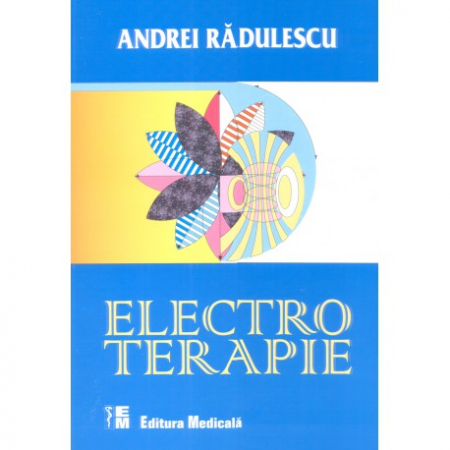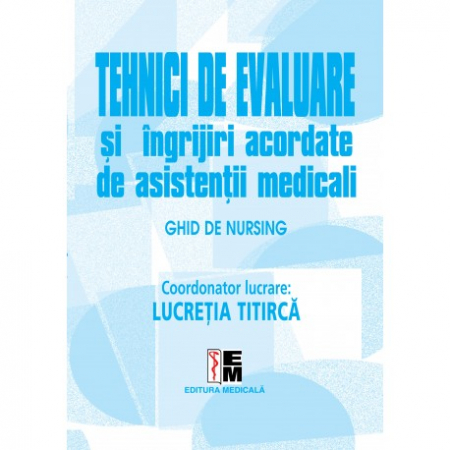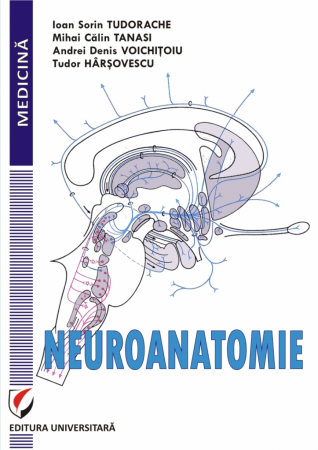Propuneri manuscrise: [email protected]: 0745 204 115
Urmărire comenzi Persoane fizice / Vânzări: 0745 200 357 / Comenzi Persoane juridice: 0721 722 783
Editura: Editura Universitară
Autor: Marilena Stoian
Ediția: I
Pagini: 242
Anul publicării: 2022
ISBN: 978-606-28-1562-2
DOI: https://doi.org/10.5682/9786062815622
- Descriere
- Download (1)
- Autori
- Cuvânt înainte
- Cuprins
- Review-uri (0)
The adenoma carcinoma sequence postulates that colorectal carcinomas arise from precursor lesions, called adenomas. All adenomas contain dysplastic epithelium that arises from mutations in either the adenomatous polyposis coli gene or DNA mismatch repair genes. The earliest lesion detected with dysplasia is the aberrant crypt focus. Over time, as this lesion acquires additional mutations, it evolves into a classic adenomatous polyp. Adenomatous polyps are classified as tubular, tubulovillous, or villous. Generally, as polyps increase in size, the degree of dysplasia worsens, the villous component increases, the number of genetic abnormalities increases, and the likelihood of harboring invasive carcinoma increases. Carcinomas associated with DNA mismatch repair mutations are more likely to be poorly differentiated and incite a host lymphocytic response. These tumors seem to have a better prognosis, stage for stage, than typical colorectal carcinomas.
Evidence suggests that subtypes of serrated polyps, particularly TSA and SSA/P, can lead to adenocarcinoma through the serrated pathway. Moreover, the data indicate that the SSA/P are the precursors of colorectal carcinoma by MSI and may be subject to rapid progression to malignancy. An important step to reduce the incidence of CRC initiated by the serrated pathway is to improve the detection of serrated polyps and to ensure their complete removal during endoscopy. Understanding of the so called serrated carcinogenesis pathway is an important step forward in expanding possibilities in the prevention of CRC.
-
Colorectal cancer. From genetics to prevention
Descarcă
Gabriel Scarlat, MD Internal Medicine, Dr. Ion Cantacuzino Hospital
Bianca Procopiescu, MD Internal Medicine, Dr. Ion Cantacuzino Hospital
Silviu Marius Seitan, MD Internal Medicine, Dr. Ion Cantacuzino Hospital
Iuliana Pantelimon, Medical oncologist, Dr. Ion Cantacuzino Clinical Hospital, UMF Carol Davila
This comprehensive overview of cancer development is to the current understanding of tumor genesis and malignant progression in colorectal cancer, a common and lethal disease : is the third most commonly diagnosed cancer in males and the second in females, according to the World Health Organization GLOBOCAN database, with rates of both incidence and mortality substantially higher in males than in females.
The focus is on colorectal carcinogenesis and histogenesis of the malignant disorders. The earliest phases of colorectal oncogenesis occur in the normal mucosa, with a disorder of cell replication. Most colorectal malignancies develop from an adenomatous polyp (adenoma). These can be defined as well‑demarcated masses of epithelial dysplasia, that become dysplastic with uncontrolled crypt cell proliferation. Adenomatous polyps form in the colon when normal mechanisms regulating epithelial renewal are disrupted. Surface cells lining the intestine are continuously lost into the bowel lumen due to apoptosis and exfoliation, and must be continuously replaced. Typically, proliferation occurs exclusively at the crypt base. As cells move towards the luminal surface, they cease proliferating and terminally differentiate. This ordered process is increasingly disrupted as adenomas increase in size, become dysplastic, and eventually attain invasive potential.When neoplastic cells pass through the muscularis mucosa and infiltrate the submucosa, they are malignant. Carcinomas usually originate from pre‑existing adenomas, but this does not imply that all polyps undergo malignant changes and does not exclude de novo oncogenesis. Besides adenomas, there are other types of pre‑neoplasia, which include hyperplastic polyps, serrated adenomas, flat adenomas, and dysplasia that occurs in the inflamed colon in associated with inflammatory bowel disease.
Colorectal neoplasms cover a wide range of pre‑malignant and malignant lesions, many of which can easily be removed during endoscopy if they are small. Colorectal neoplasms and/or pre‑neoplasms can be prevented by interfering with the various steps of oncogenesis, which begins with uncontrolled epithelial cell replication, continues with the formation of adenomas, and eventually evolves into malignancy. The knowledge described herein will help to reduce and prevent this malignancy, which is one the most frequent neoplasms in some developed countries. The adenoma‑carcinoma sequence postulates that colorectal carcinomas arise from precursor lesions, called adenomas. All adenomas contain dysplastic epithelium that arises from mutations in either the adenomatous polyposis coli gene or DNA mismatch repair genes. The earliest lesion detected with dysplasia is the aberrant crypt focus. Over time, as this lesion acquires additional mutations, it evolves into a classic adenomatous polyp ; tubular, tubulovillous, or villous. Generally, as polyps increase in size, the degree of dysplasia worsens, the villous component increases, the number of genetic abnormalities increases, and the likelihood of harboring invasive carcinoma increases. Carcinomas associated with DNA mismatch repair mutations are more likely to be poorly differentiated and incite a host lymphocytic response. These tumors seem to have a better prognosis, stage for stage, than typical colorectal carcinomas. Evidence suggests that subtypes of serrated polyps, particularly TSA and SSA/P, can lead to adenocarcinoma through the serrated pathway. Moreover, the data indicate that the SSA/P are the precursors of colorectal carcinoma by MSI and may be subject to rapid progression to malignancy. An important step to reduce the incidence of colorectal cancer initiated by the serrated pathway is to improve the detection of serrated polyps and to ensure their complete removal during endoscopy. Understanding of the so‑called serrated carcinogenesis pathway is an important step forward in expanding possibilities in the prevention of colorectal cancer.
Until large, statistically robust studies are completed with multivariate analysis of an array of potential prognostic factors and their interaction with each other, no other molecular or genetic markers should be used routinely to develop treatment recommendations or to estimate prognosis in patients with resected colorectal cancer. The past few years have seen exciting developments in the field of molecular tumor classification, especially in the identification of the importance of the tumor microenvironment to biologic behavior. Such progress raises the possibility of future molecularly based prognostic stratification systems that may someday be used to select specific therapy, but molecular classification is not yet ready for incorporation into available staging systems or other prognostic models. In present there is at least three molecular pathways leading to colorectal tumorigenesis : the chromosomal instability (CIN) pathway, which is typified by the inherited condition FAP; the mutator‑phenotype/DNA mismatch repair pathway, which is implicated in the inherited condition Lynch syndrome as well as in a proportion of sporadic colorectal cancer in which there is loss of DNA mismatch repair protein function; and the hypermethylation phenotype hyperplastic/serrated polyp pathway, which is characterized by a high frequency of methylation of some CpG islands (CpG island hypermethylation phenotype [CIMP]‑positive).
The major factors that increase the risk of colorectal cancer and influence screening recommendations are certain hereditary forms of colorectal cancer, age, a personal or family history of sporadic colorectal cancer (and possibly large or advanced adenomas), inflammatory bowel disease, and a history of abdominal irradiation. One in four patients with colorectal cancer has a family history of colorectal cancer. Only a few percent of patients with colorectal cancer have a high‑risk genetically heritable familial cancer syndrome. Familial colorectal cancer results from the interaction of genetic and environmental causes. Several polymorphisms have been identified that are statistically associated with colorectal cancer, but with the exception of high‑risk genetic syndromes such as Lynch syndrome (hereditary nonpolyposis colon cancer [HNPCC]), familial adenomatous polyposis (FAP), and MUTYH‑associated polyposis (MAP), these associations appear to account for little of the observed familial risk.Several potentially modifiable factors, including obesity, diabetes, tobacco use, excess consumption of alcohol, excess consumption of processed meat, and lack of physical activity, have been consistently identified as risk factors in observational studies, but at present, they do not alter screening recommendations. Other risk factors have been identified, including African‑American race, sex, acromegaly, and a history of renal transplantation, but their influence on screening recommendations has been variable.A substantial body of evidence supports a protective effect of aspirin and other nonsteroidal anti‑inflammatory drugs (NSAID) on the development of colonic adenomas and cancer. Other protective factors have also been identified, mainly in observational studies, but the strength of some of these associations is uncertain. Specific types of diets may reduce the risk of colorectal cancer. Despite the uncertainty, a protective diet can be defined for clinical purposes to include avoidance of processed and charred red meat, inclusion of vegetables and unprocessed forms of wheat bran (controversial), an adequate amount of folate intake from food, limited caloric intake, and avoidance of excessive alcohol.
In contrast to other aggressive forms of cancer, such as lung cancer and pancreatic cancer, characterized by higher rates of proliferation and metastasis of neoplastic cells, colorectal cancer is, at the present moment, considered to be governed by a slow course of growth from precancerous colonic polyps to invasive tumoral tissue to advanced stages of the disease, in which neoplastic cells disseminate throughout the organism, affecting multiple tissues (metastasis), or induce paraneoplastic syndromes (for example, thrombosis). This particular pathological aspect provides the clinician with the opportunity of early detection and prevention of colorectal cancer, making this form of neoplasia one of the most likely preventable of all forms of cancer. Thus, the current screening methods for colorectal cancer should always be considered, as they are currently the most reliable methods of diagnosing the disease in its early and potentially curable stages, therefore reducing mortality rates associated with the disease, decreasing its incidence and increasing survival among the population.
With the evolving understanding of colorectal cancer stem cells, it is now easier to appreciate why current systemic therapies only induce partial or incomplete remission. Surgical excision is currently the only effective management strategy we have against this group of cells. Therefore, there is a pressing need to develop new therapies that can target this unique subpopulation of cancer cells. Such treatments would assist in both eradicating disease and maintaining a longer duration of remission.
CHAPTER I. INTRODUCTION / 11
I.1. Definition / 11
I.2. Incidence and Mortality /14
I.3. Etiology and Pathogenesis of Colorectal Cancer / 19
I.4. Pathology and Immunohistochemistry of Colorectal Cancer / 23
I.5. Colorectal Cancer = Three Colons – Three Cancers / 28
Paradigm Shift and Clinical Implications / 28
CHAPTER II. COLORECTAL CARCINOGENESIS / 31
II.1. Introduction / 31
II.2. Stages of Carcinogenesis / 34
II.3. Colon: Function, Anatomy and Morphology / 38
II.4. Cell Renewal (Turnover) / 44
II.5. Stem Cells and Colorectal Carcinogenesis / 46
II.6. The Pathways Associated with Colorectal Oncogenesis / 54
II.6.1. Adenoma – Carcinoma Sequence Type / 56
II.6.2. Serrated Polyp Pathway / 57
II.6.3. Molecular Pathways Of Colorectal Carcinogenesis / 59
II.7. Pre Malignant Lesions of Colorectal Cancer / 60
II.7.1. Aberrant Crypt Foci / 61
II.7.2. Adenomatous and Non Adenomatous Polyps / 66
II.7.3. Polyps and Dysplastic Lesions in Inflammatory Bowel Disease / 72
II.8. Colonic carcinogens / 84
II.8.1. Definition / 84
II.8.2. Rodent Models in Colorectal Carcinogenesis Study / 85
II.8.3. Classification of Colonic Carcinogens / 88
II.8.4. Mechanism of Action / 89
II.8.5. Chemoprevention / 96
References / 101
CHAPTER III. COLORECTAL CANCER SCREENING / 129
III.1. Introduction / 129
III.2. Screening methods / 130
III.2.1. Visual Examinations / 131
III.2.2. Stool Tests / 133
III.3. Non recommended Tests for Colorectal Cancer Screening / 134
III.4. Strategies Implemented to Overcome Screening Barriers / 135
References / 136
CHAPTER IV. FOLLOW UP CARE IN COLORECTAL CANCER / 141
IV.1. Definition / 141
IV.2. Method evaluation: Objective clinical examination / 142
IV.3. Method evaluation: Carcinoembryonic antigen (CEA) / 143
IV.4. Method evaluation: Circulating tumor DNA / 144
IV.5. Method evaluation: Computed tomography (CT) / 145
IV.6. Method evaluation: Endoscopic surveillance / 147
IV.7. Method evaluation: MRI detection / 151
IV.8. Vitamin D supplementation / 152
References / 154
CHAPTER V. COLORECTAL CANCER SURVIVAL AND PROGNOSTIC / 157
V.1. Introduction / 157
V.2. Histopathological Prognostic Factors / 158
V.2.1. Prognostic Factors Relating to the Primary Tumor / 158
V.2.2. Prognostic Factors Relating to the Evolution of the Primary Tumor / 161
V.3. Prognostic Factors Relating to the Surgical Procedure / 173
V.4. Clinical Factors with Prognostic Importance / 176
V.5. Immunological Prognosis Factors / 178
V.6. Biochemical and Genetic Prognostic Factors / 180
V.7. Analytical Prognosis Factors / 182
V.8. Conclusions / 182
References / 185
CHAPTER VI. COLORECTAL CANCER MULTIDISIPLINARY TREATMENT / 192
VI.1. The issue of colorectal cancer / 192
VI.2. Etiology / 193
VI.3. Prognostic factors / 194
VI.4. Diagnosis and Staging / 200
VI.5. Multidisciplinary treatment of colorectal cancer / 204
VI.6. Follow up and Survivorship / 224
References / 227

6359.png)
![Colorectal cancer. From genetics to prevention - Marilena Stoian [1] Colorectal cancer. From genetics to prevention - Marilena Stoian [1]](https://gomagcdn.ro/domains/editurauniversitara.ro/files/product/large/colorectal-cancer-from-genetics-to-prevention-540845.jpg)
